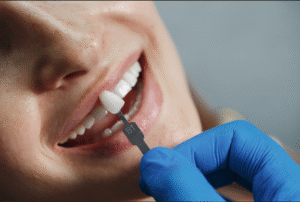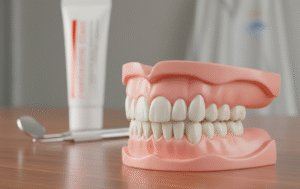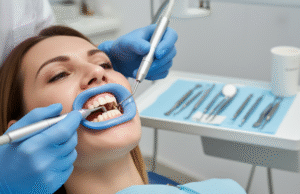Dental fillings are a common solution for treating cavities, restoring the function and appearance of a tooth. After undergoing the procedure, many patients wonder when and what they can eat without compromising the success of their filling. Proper care after a dental filling can ensure comfort and longevity, and knowing the dos and don’ts of eating is essential.
This guide covers everything you need to know about eating after a dental filling, including the types of fillings, foods to avoid, and recovery tips.
Understanding Dental Fillings
Dental fillings are used to restore teeth damaged by decay or trauma. They protect the tooth structure and prevent further damage. Common types of dental fillings include:
- Composite Fillings
These tooth-colored fillings are aesthetically pleasing and bond well with natural teeth. They harden quickly after being cured with a special light. - Amalgam Fillings
Made from a mixture of metals, amalgam fillings are durable and typically used for back teeth. They may take longer to harden. - Ceramic Fillings
These fillings are made from porcelain, offering a natural appearance and resistance to staining. - Gold Fillings
Known for their durability, gold fillings require more time and multiple visits to place.
Can I Eat After a Dental Filling?
The answer depends on the type of filling used and the specific recommendations of your dentist. Here’s a breakdown based on filling type:
- Composite Fillings: You can eat immediately after the procedure, but it’s best to wait until the numbness wears off to avoid biting your cheek or tongue accidentally.
- Amalgam Fillings: These take longer to set, so you may need to wait at least 24 hours before chewing on the filled tooth.
- Ceramic and Gold Fillings: Your dentist will provide specific instructions, as these may vary based on the placement and curing process.
Foods to Avoid After a Dental Filling
To protect your filling and allow proper healing, avoid these foods for the first 24–48 hours:
- Hard Foods
Nuts, hard candies, and ice can put undue pressure on the filling and increase the risk of cracking. - Sticky Foods
Caramel, gum, and taffy can dislodge the filling or stick to it, causing discomfort. - Hot or Cold Foods
Extreme temperatures can irritate the tooth, especially if it’s sensitive after the procedure. - Crunchy Snacks
Chips and popcorn can leave particles around the filling, potentially leading to discomfort or infection.
Tips for Eating After a Dental Filling
- Wait for the Numbness to Subside
Dental anesthetics can leave your mouth numb for several hours. Avoid eating until the numbness wears off to prevent accidental injury. - Choose Soft Foods
Stick to soft, easy-to-chew options like yogurt, mashed potatoes, soup, and scrambled eggs. These are gentle on your teeth and gums. - Chew Carefully
Chew on the side opposite the filling to reduce pressure on the treated tooth. - Practice Good Oral Hygiene
Gently brush and floss around the filled tooth to maintain cleanliness and prevent decay.
How to Manage Sensitivity After a Dental Filling
It’s normal to experience sensitivity to temperature, pressure, or sweetness after a filling. This sensitivity typically resolves within a few days. To manage it:
- Use a toothpaste designed for sensitive teeth.
- Avoid extreme temperature foods and beverages.
- Take over-the-counter pain relievers if recommended by your dentist.
- Contact your dentist if sensitivity persists for more than two weeks.
Common Myths About Eating After a Dental Filling
- “I can eat anything immediately after a filling.”
While composite fillings allow for immediate eating, it’s still important to avoid certain foods to protect the filling and reduce discomfort. - “All fillings take hours to set.”
Modern composite fillings harden instantly under curing light, but amalgam fillings may require more time. - “Sensitivity means the filling wasn’t done correctly.”
Sensitivity is a common reaction as the tooth adjusts to the filling and typically resolves on its own.
Hummingbird Dental: Richmond Hill’s Leading Emergency Dental Clinic
When a dental emergency strikes in Richmond Hill, Hummingbird Dental is the clinic you can count on for immediate, high-quality care. Located at 10376 Yonge St #202, Richmond Hill, ON L4C 3B8, Hummingbird Dental is renowned for its responsive and compassionate approach to emergency dental situations. Whether it’s a sudden injury, a painful toothache, or a dental issue that needs urgent attention, the experienced team at Hummingbird Dental is ready to help.
Contact Hummingbird Dental at +1 647-370-2024 or via email at info@hummingbirddental.ca to receive the emergency dental care you need. Their team is dedicated to providing quick and effective treatment to alleviate pain and protect your oral health.
FAQs About Eating After a Dental Filling
1. How long should I wait to eat after a dental filling?
The wait time depends on the type of filling. For composite fillings, you can eat as soon as the numbness wears off. For amalgam fillings, wait at least 24 hours before chewing on the filled tooth.
2. What foods are safe to eat after a dental filling?
Soft foods such as yogurt, soup, mashed potatoes, and scrambled eggs are ideal. These options are gentle on your teeth and won’t disturb the filling.
3. Can I drink hot coffee after a dental filling?
It’s best to avoid hot beverages immediately after the procedure, especially if your tooth is sensitive. Opt for lukewarm or room-temperature drinks instead.
4. Is it normal for my tooth to feel sensitive after a filling?
Yes, sensitivity to temperature and pressure is common and should subside within a few days to two weeks. Contact your dentist if it persists.
5. What happens if I accidentally eat something hard after a filling?
If you notice pain or feel that the filling has been damaged, contact your dentist immediately. They can assess the tooth and make any necessary repairs.
Conclusion
Eating after a dental filling requires a bit of caution and care to ensure a smooth recovery and protect your new filling. By following your dentist’s instructions, avoiding certain foods, and practicing good oral hygiene, you can enjoy a comfortable recovery and maintain the longevity of your dental filling.
Remember, each person’s experience may vary based on the type of filling and individual healing process. If you have any concerns or persistent discomfort, don’t hesitate to reach out to your dentist. With the right care, your restored tooth will serve you well for years to come.










